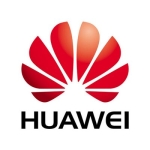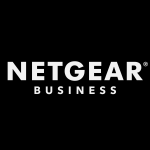What is our primary use case?
It's our main WiFi provider. We're a newspaper company in Sweden. It's actually a lot of newspaper brands. We're around a hundred brands. We have around 70 offices in Sweden, all across Sweden. We have it deployed in all the offices. The office sites can vary from one access point all the way up to the biggest one, which has around 150 access points.
What is most valuable?
Our network department isn't that big. Right now, we're two employees and one consultant. Since we don't want to travel all over, we still deploy this. It's really, really, really simple to set up the site in the cloud and then just ship the access point to a local technician, plug it in, and put it up where you like it to be placed.
It works for every one of our offices. The lack of integration or the lack of work needed to be put it into the local site to get it to work is really lovely. The feedback we get from the system with the AI is excellent. It tells you if the issue is a bad cable, or missing a plan, et cetera. All these little things tare mitigating human error.
The solution is pretty generic and easy to use.
What needs improvement?
You can only get so far with it. If you want to do more specific stuff, it's a bit limited. You can alter the channels, and you can alter which bandwidth. However, it stops there. If you want to go deeper in, to do more customization, or have an office with special needs, it can be a bit tricky to get help from Juniper and to get them to do something in the background of the cloud to help.
For how long have I used the solution?
I’ve been using the solution for two and a half years.
What do I think about the stability of the solution?
We really haven't had any downtime at all in these two years. It's been really good. The access point will work without a cloud connection. If they have maintenance or something, it doesn't really matter. Everything works anyway. They're really quick on rebooting, which seldom happens anyway. It's actually really stable.
What do I think about the scalability of the solution?
The solution is scalable. You just keep adding them. I'm not really sure where the limit is, actually. We don't deploy every access point on one site. Maybe it's around 3,000 to 5,000 access points if you're in one site. However, we're quite far from that. You keep adding them. Since it's the cloud controller, they will probably just add stuff in the background if you need more power. Other than that, you're limited to how much power you can output from your switch infrastructure. If you go that way, or with external power - not PoE. With an adapter, you plug into the power circuit connection.
How are customer service and support?
It's been a while since we used them. We used them, in the beginning, a bit. However, they're excellent. They have their own department at Juniper, so it speeds things up a bit. You choose if you want them to be able to access your cloud segment or not. If you choose to allow them in there, it will speed things up for you.
They also have a really nice feature, like a community request page. If you're missing something, you can add a request, and then people vote for it if they like it too. If it gets enough votes, they will implement it, or at least consider it.
How was the initial setup?
The real benefit of it is it doesn't take you long at all to set up actually. You have an app, you scan the QR code on the Access Point, and then you'll say in the app which site you want it to belong to. It will pop up there. You have the usual cloud delay. It's a couple of minutes. However, other than that, it's just set up and go. It’s really quick and easy.
What was our ROI?
ROI is quite hard to actually calculate. We noted that we could decrease our switch infrastructure to see that there's sufficient power and connectivity for the access points so that there are more people on the WiFi with this solution than the old one.
What's my experience with pricing, setup cost, and licensing?
As with all cloud offerings, you choose a one, two, three, or five-year license, and then you choose between only managing your Access Point or doing WiFi assurance with the AI. It's your own choice in terms of how much licensing money you want to spend on it. That said, it could be a bit cheaper. If you have a lot of access points, it will be a significant amount of money compared to if you have an on-prem solution.
We pay maybe 1000 SEK per year, per access point.
What other advice do I have?
We're just a customer.
If you don't have any special needs, you will get there with this solution. However, as soon as you want to do something more customized for an office, or a site, you will need to involve Juniper support in it. For some people, that's fine. For some others, it's not.
You should just consider your environment first to see if WiFi is your sole provider of connectivity in the infrastructure or if it's a compliment. What are your demands on a WiFi solution? Go from there. However, depending on the size of the organization, if it's a smaller organization and not that competent or tech-heavy, it's a perfect solution. It could work if it's a bigger organization with a lot of demands. However, it also might not really be what you're after.
In terms of deployment and maintenance, and stuff like that, it's a nine out of ten. However, in terms of how much you can actually configure in it or how much you can go in-depth, it's a seven. Maybe it’s an eight out of ten all around.
It's really nice. It's really working. However, sometimes you want to add something extra, and it's hard to get it in there. It's not that it takes away any real functionality for us. It's just that we have a really busy environment in one office, and would like to be able to configure it a bit more in detail.
Disclosure: My company does not have a business relationship with this vendor other than being a customer.
















